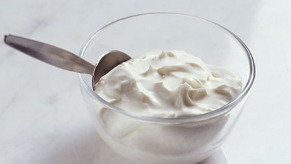Dr Ohhiras Probiotics (also known as OMX probiotics) are a type of probiotic supplement manufactured by Essential Formulas.
There are currently two products in the Dr Ohhira range: Dr Ohhira’s Probiotics 12 Plus (Original Formula) and Dr Ohhira’s 12 Plus Professional Formula.
Both products contain identical ingredients. The difference between them lies in their fermentation times. Dr Ohhira’s Probiotics 12 Plus are fermented for three years, whilst the Professional Formula receives an additional two years, making a total fermentation period of five years.
This longer fermentation period is said to increase the potency of the organic acids and probiotic bacteria contained in the product. Thus, whilst there are fewer bacteria in the Professional Formula (600 million CFUs1) compared to the Original Formula (900 million CFUs), the bacteria are said to be more powerful. As far as we understand, however, no independent evidence exists to confirm this increased potency.
Both products are available in packs of sixty capsules, which are blister packed to protect the products’ potency. The capsules are suitable for adults, children and infants alike and can be stored at room temperature without the need for refrigeration.
Product Ingredients
Dr Ohhira’s probiotics differ from many of the probiotic supplements on the market. Rather than being chemically synthesized in a laboratory as is the case with many probiotic supplements today, the probiotics in the Dr Ohhira range are made from natural ingredients using only a modern-day version of ancient Japanese fermentation techniques.
Dr Ohhira’s products contain over 92 different plant species including wild fruits, seaweeds, herbs, vegetables and mushrooms as well as spring water. This crop mixture forms the basis of the products’ prebiotics, fructooligosaccharides (also known as FOS), which are naturally developed during the fermentation process.
Additionally, the products contain a probiotic blend totaling 900 million CFUs (Original) and 600 million CFUs (Professional) respectively and both comprising 4 bacterial species and 12 bacterial strains:
- Bifidobacterium breve subspecies (ss) breve
- Bifidobacterium infantis ss. infantis
- Bifidobacterium longum
- Enterococcus faecalis TH10
- Lactobacillus brevis
- Lactobacillus acidophilus
- Lactobacillus bulgaricus
- Lactobacillus casei ss. casei
- Lactobacillus fermentum
- Lactobacillus helveticus ss. jagurti
- Lactobacillus plantarum
- Streptcoccus thermophilus
Neither of the Dr Ohhira probiotics contain artificial additives, preservatives, colors, flavors, soil-based organisms (SBOs) or animal by-products. The product ingredients are also free from exposure to chemical fertilizers, pesticides and herbicides. Additionally, they are non-GMO2, dairy, soy and gluten free. Thus Dr Ohhiras probiotics are suitable for those who follow a dairy soy and/or gluten-free diet as well as for vegetarians.
Evidence for the Health Benefits of Dr Ohhira Probiotics
Whilst there is no specific scientific evidence relating specifically to Dr Ohhira’s probiotic supplements, research studies have proven that the specific probiotic strains included in these products are indeed beneficial to health. Lactobacillus acidophilus for example has been scientifically shown to help constipation 3, abdominal pain4 and rhinitis5, whilst Lactobacillus plantarum has been proven to help symptoms of Irritable Bowel Syndrome (IBS)6.
Additionally, the mixture of beneficial bacteria contains the patented Th10 strain of Enterococcus faecilis, which was developed from the fermented food tempeh by Dr Lichiroh Ohhira himself.  Dr Ohhira has shown that this strain of bacteria inhibits the MRSA (Methicillin-resistant Staphylococcus aureus) superbug, Escherichia coli 0157 (E. Coli 0157) as well as Helicobacter pylori (H. pylori), which causes peptic ulcers. He has also demonstrated that Enterococcus faecalis TH10 is 6.25 times stronger than other naturally occurring lactic acid bacteria.
Dr Ohhira has shown that this strain of bacteria inhibits the MRSA (Methicillin-resistant Staphylococcus aureus) superbug, Escherichia coli 0157 (E. Coli 0157) as well as Helicobacter pylori (H. pylori), which causes peptic ulcers. He has also demonstrated that Enterococcus faecalis TH10 is 6.25 times stronger than other naturally occurring lactic acid bacteria.
Whilst Dr Ohhira has won numerous awards for his work and for his probiotics, we cannot find evidence that any independent research has been conducted to verify these results.
However, user reviews (see Amazon.com) and anecdotal evidence demonstrate that this probiotic is highly regarded by many patients and physicians alike. Indeed there are vast numbers of user reviews, which rate these products very positively. Many people report that Dr Ohhira probiotics are effective for many conditions including Irritable Bowel Syndrome (IBS), Candida albicans, urinary tract infections, ulcerative colitis, Helicobacter pylori (H. pylori), allergies and vaginal yeast infections.
Advantages
We think there are a number of advantages to Dr Ohhira’s probiotics. These are:
- These products do not require refrigeration and so are ideal to take with you on trips away.
- The probiotics contain a good blend of probiotic strains and species. Taking a probiotic with a wide-range of strains and species is thought to be more beneficial than taking a single-strain product, as taking multiple strains increases the chance of at least one being effective.
- The products contain only natural ingredients.
- The products are free from fillers and binders, which can be an irritant to people with digestive problems.
- Both products have an extremely long shelf life of three years, this is much longer than most other probiotic supplements on the market.
- Adults, children and even infants can take the products, making them suitable for the entire family!
- The products are encapsulated in an enteric coating, which is designed to withstand the stomach acid, delivering the probiotic bacteria intact to the colon.
Disadvantages
In terms of their disadvantages, Dr Ohhira probiotics have the following drawbacks:
- They are available only in a sealed capsule form. This is likely to be problematic for those with severe dysbiosis problems, who may wish to start small and increase the dosage slowly. The sealed capsules are very difficult to split. Those with severe digestive issues may find that taking an entire capsule of these probiotics initially causes a healing crisis, which results in a flare of their symptoms.If this is you and you want to try these products, then one way to lessen this exacerbation of symptoms is to take one capsule, wait for a few days until your symptoms have subsided (either totally or to their usual level) and then to take another. As your gut flora re-balances over time, these initial flare-ups on taking the probiotic should subside.
- They contain a mixture of many different herbs, vegetables, wild fruits, seaweeds and mushrooms, which may make them difficult to tolerate for people with allergies and food intolerance symptoms.
- They contain fructooligosaccharides (also known as FOS), which may make them unsuitable for people with dysbiosis.
- The bacterial count per capsule (CFUs) is much lower many other probiotic supplements.
- The cost is very high when compared to other probiotic supplements. See our cost comparison guide for advice on how to compare fairly the cost of different probotics.
Our Evaluation
We have given these products a three-star rating on the basis that they have some excellent qualities but also some limiting ones. These products are suitable for the whole family: for adults, children and infants alike. They also contain an excellent mix of bacterial strains and species, though in much smaller quantities (Colony Forming Units or CFUs) than most other probiotic supplements. Additionally, the wide range of ingredients and capsule form mean that they are probably not suitable for those with allergy and intolerances. Also the cost is high per 10 billion CFUs of bacteria when compared to other supplements.
The reviews (see Amazon.com) though are excellent – the choice is yours!!!
Where Can I Buy Dr Ohhira’s Probiotics?
You can buy Dr Ohhira’s probiotics from our on-line store, provided in partnership with Amazon.com:
Dr Ohhira’s probiotics are also available from many natural health food stores (both actual and on-line) as well as from some pharmacies.






